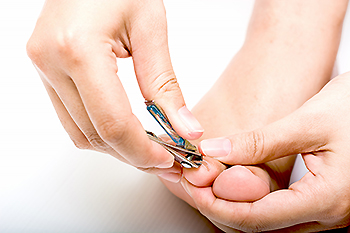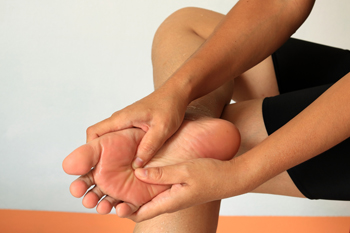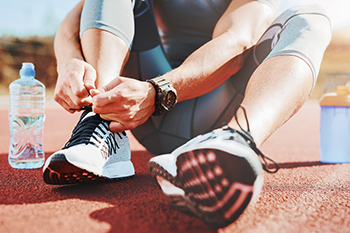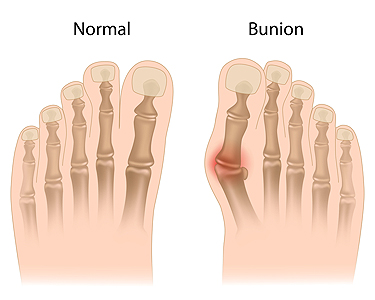Manalapan
(732) 845-0100
Manalapan (732) 845-0100

Cutting one’s toenails is a key component of maintaining healthy feet. Not only does keeping your toenails cut to an appropriate length help stave off the development of ingrown toenails, it is also a way to make your feet look more visually appealing. However, many individuals who attempt to cut their toenails fail to utilize the appropriate tools for this critical self-care practice. For example, many individuals attempt to cut their toenails by using a pair of regular scissors or even a cutting knife. These tools are not appropriate and can be very dangerous. Instead, you may opt for a proper pair of toenail clippers. It is important that you utilize a different, larger pair of nail clippers used exclusively for your toenails. This is because using the same pair of nail clippers on both your fingernails and your toenails can spread bacteria and be unhealthy. In addition to having two pairs of different nail clippers, you should also be mindful of keeping them clean. You can clean and disinfect your pair of toenail clippers after each use to make sure that you are doing your best to prevent the spread of harmful bacteria. Lastly, another proper tool for cutting your toenails is a nail file, such as an emery board. You can use this tool to smooth the edges of your nails after clipping them. For more information on the proper tools you should be using to cut your toenails, consult a podiatrist.
Everyday foot care is very important to prevent infection and other foot ailments. If you need your feet checked, contact Dr. Charles Marchese from Manalapan Foot & Ankle. Our doctor can provide the care you need to keep you pain-free and on your feet.
Everyday Foot Care
Often, people take care of their bodies, face and hair more so than they do for their feet. But the feet are a very important aspect of our bodies, and one that we should pay more attention to. Without our feet, we would not be able to perform most daily tasks.
It is best to check your feet regularly to make sure there are no new bruises or cuts that you may not have noticed before. For dry feet, moisturizer can easily be a remedy and can be applied as often as necessary to the affected areas. Wearing shoes that fit well can also help you maintain good foot health, as well as making it easier to walk and do daily activities without the stress or pain of ill-fitting shoes, high heels, or even flip flops. Wearing clean socks with closed shoes is important to ensure that sweat and bacteria do not accumulate within the shoe. Clean socks help to prevent Athlete’s foot, fungi problems, bad odors, and can absorb sweat.
If you have any questions please feel free to contact our offices located in Manalapan, NJ, and Staten Island, NY . We offer the newest diagnostic and treatment technologies for all your foot and ankle needs.

Diabetic neuropathy is nerve damage that is primarily caused by diabetes. High levels of blood sugar over a long period can cause damage to the nerves. As diabetics age, their chances of developing this nerve damage increase. Harm to the nerves also can be caused by drinking too much alcohol. Neuropathy symptoms often show up in the feet, which because of the nerve damage may not feel pain. This leaves the diabetic at risk for developing ulcers from cuts or sores that are neglected. The nerves in the feet that normally detect pain, touch, and hot or cold do not function properly. This also causes weakness in the lower leg and foot muscles. It is recommended that diabetics check, or have someone check, their feet each day for sores, cuts, and bruises. Regular visits with a podiatrist, who can test the severity of the nerve damage and suggest the proper treatment options, are strongly suggested.
Neuropathy
Neuropathy can be a potentially serious condition, especially if it is left undiagnosed. If you have any concerns that you may be experiencing nerve loss in your feet, consult with Dr. Charles Marchese from Manalapan Foot & Ankle. Our doctor will assess your condition and provide you with quality foot and ankle treatment for neuropathy.
What Is Neuropathy?
Neuropathy is a condition that leads to damage to the nerves in the body. Peripheral neuropathy, or neuropathy that affects your peripheral nervous system, usually occurs in the feet. Neuropathy can be triggered by a number of different causes. Such causes include diabetes, infections, cancers, disorders, and toxic substances.
Symptoms of Neuropathy Include:
Those with diabetes are at serious risk due to being unable to feel an ulcer on their feet. Diabetics usually also suffer from poor blood circulation. This can lead to the wound not healing, infections occurring, and the limb may have to be amputated.
Treatment
To treat neuropathy in the foot, podiatrists will first diagnose the cause of the neuropathy. Figuring out the underlying cause of the neuropathy will allow the podiatrist to prescribe the best treatment, whether it be caused by diabetes, toxic substance exposure, infection, etc. If the nerve has not died, then it’s possible that sensation may be able to return to the foot.
Pain medication may be issued for pain. Electrical nerve stimulation can be used to stimulate nerves. If the neuropathy is caused from pressure on the nerves, then surgery may be necessary.
If you have any questions, please feel free to contact our offices located in Manalapan, NJ, and Staten Island, NY . We offer the newest diagnostic and treatment technologies for all your foot care needs.

Foot pain in cycling is rarely discussed but it is more common than might be imagined. A main cause of foot pain is ill-fitting footwear. Shoes that are too tight or do not have enough room in the toe box will cause pain. Socks that are too thick and take up too much space in the shoe, as well as bulkier orthotics built for walking or standing, can cramp toes, restricting blood flow and nerve conduction in the feet. Another common cause of foot pain in cycling is when cleats are too far forward. They can put more pressure on the forefoot, causing the foot muscles to do more work to stabilize the foot. This forward position can also allow the toes to lean down, which can cause the foot to slide down in the shoe and jam up against the front of the shoe. With the toes pointing down, the quadriceps will also be activated more than the glutes and hip extensors. This can upset the balance of these muscle groups and the weight distribution between the hips and feet. Moving the cleat further back can allow these muscles to relax. If you are a cyclist experiencing foot pain, try different shoes and move the cleat back to relieve discomfort. If these simple fixes do not work, consult with a podiatrist who is in the best position to diagnose any foot problems and treat them.
Ankle and foot injuries are common among athletes and in many sports. They can be caused by several problems and may be potentially serious. If you are feeling pain or think you were injured in a sporting event or when exercising, consult with Dr. Charles Marchese from Manalapan Foot & Ankle. Our doctor will assess your condition and provide you with quality foot and ankle treatment.
Common Injuries
The most common injuries that occur in sporting activities include:
Symptoms
Symptoms vary depending upon the injury and in some cases, there may be no symptoms at all. However, in most cases, some form of symptom is experienced. Pain, aching, burning, bruising, tenderness, tightness or stiffness, sensation loss, difficulty moving, and swelling are the most common symptoms.
Treatment
Just as symptoms vary depending upon the injury, so do treatment options. A common treatment method is known as the RICE method. This method involves rest, applying ice, compression and elevating the afflicted foot or ankle. If the injury appears to be more serious, surgery might be required, such as arthroscopic or reconstructive surgery. Lastly, rehabilitation or therapy might be needed to gain full functionality in the afflicted area. Any discomfort experienced by an athlete must be evaluated by a licensed, reputable medical professional.
If you have any questions, please feel free to contact our offices located in Manalapan, NJ, and Staten Island, NY . We offer the newest diagnostic and treatment technologies for all your foot care needs.
 Running is one of the most popular and widespread forms of exercise. Yet, bunions can often make this activity challenging or even painful. There are a variety of ways that individuals can manage the effects of bunions and continue to run. Bunions are bumps that occur usually on the base of the big toe when the metatarsophalangeal joint is stressed and strained. In some cases, bunions may form at the base of the pinky toe as well. If a runner has developed a bunion that is not causing serious pain, the runner may be able to continue running with wider footwear. Opting for wider running shoes can decrease the extent to which the bunion rubs up against the shoe and further aggravates or inflames the bump. Another way that runners may cope with bunions is by applying ice to the affected area for a short duration of time following the run. Toe spacers and bunion pads may also prove to be useful for runners looking to manage the annoyance of bunions. Bunions are certainly not ideal for runners, but a podiatrist may be able to help you address the affliction and get back on the running trail comfortably again.
Running is one of the most popular and widespread forms of exercise. Yet, bunions can often make this activity challenging or even painful. There are a variety of ways that individuals can manage the effects of bunions and continue to run. Bunions are bumps that occur usually on the base of the big toe when the metatarsophalangeal joint is stressed and strained. In some cases, bunions may form at the base of the pinky toe as well. If a runner has developed a bunion that is not causing serious pain, the runner may be able to continue running with wider footwear. Opting for wider running shoes can decrease the extent to which the bunion rubs up against the shoe and further aggravates or inflames the bump. Another way that runners may cope with bunions is by applying ice to the affected area for a short duration of time following the run. Toe spacers and bunion pads may also prove to be useful for runners looking to manage the annoyance of bunions. Bunions are certainly not ideal for runners, but a podiatrist may be able to help you address the affliction and get back on the running trail comfortably again.
If you are suffering from bunions, contact Dr. Charles Marchese of Manalapan Foot & Ankle. Our doctor can provide the care you need to keep you pain-free and on your feet.
What Is a Bunion?
A bunion is formed of swollen tissue or an enlargement of boney growth, usually located at the base joint of the toe that connects to the foot. The swelling occurs due to the bones in the big toe shifting inward, which impacts the other toes of the foot. This causes the area around the base of the big toe to become inflamed and painful.
Why Do Bunions Form?
Genetics – Susceptibility to bunions are often hereditary
Stress on the feet – Poorly fitted and uncomfortable footwear that places stress on feet, such as heels, can worsen existing bunions
How Are Bunions Diagnosed?
Doctors often perform two tests – blood tests and x-rays – when trying to diagnose bunions, especially in the early stages of development. Blood tests help determine if the foot pain is being caused by something else, such as arthritis, while x-rays provide a clear picture of your bone structure to your doctor.
How Are Bunions Treated?
If you have any questions, please feel free to contact our offices located in Manalapan, NJ, and Staten Island, NY . We offer the newest diagnostic and treatment technologies for all your foot care needs.